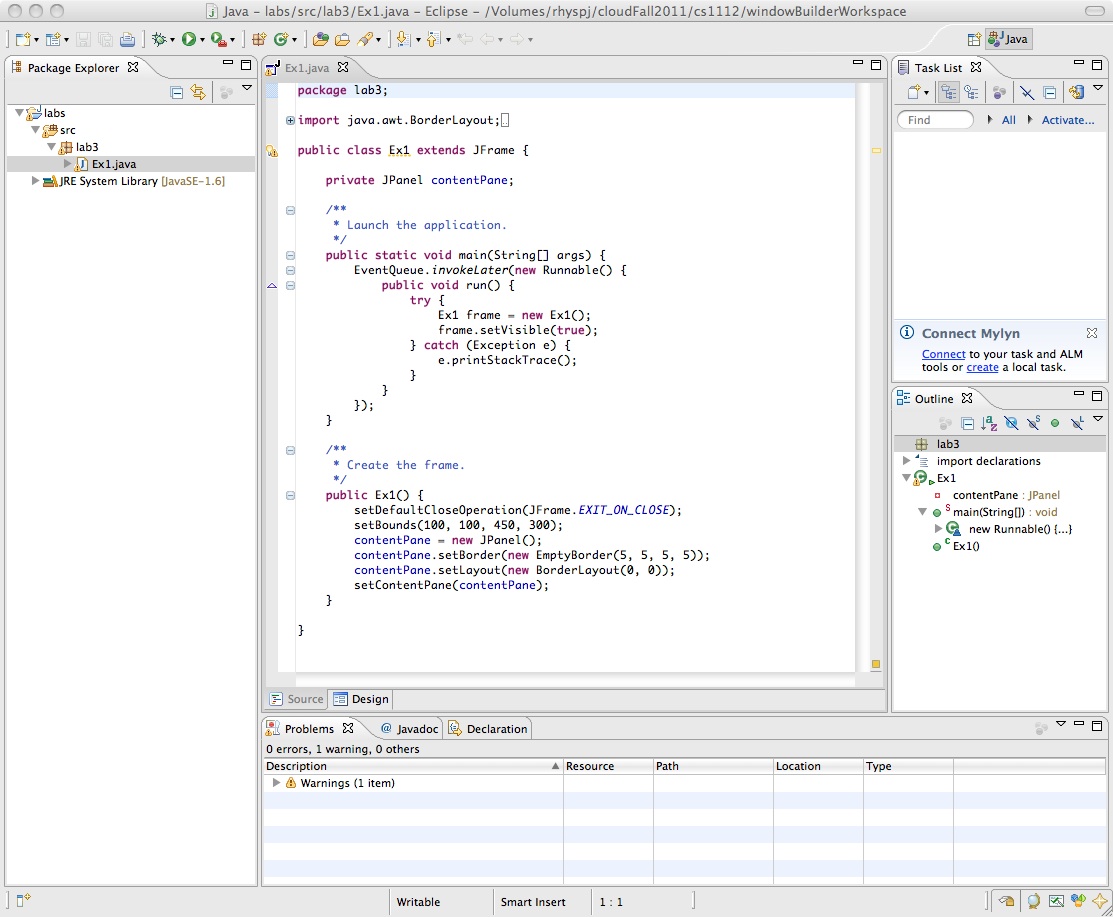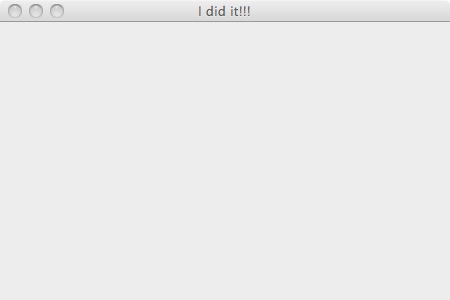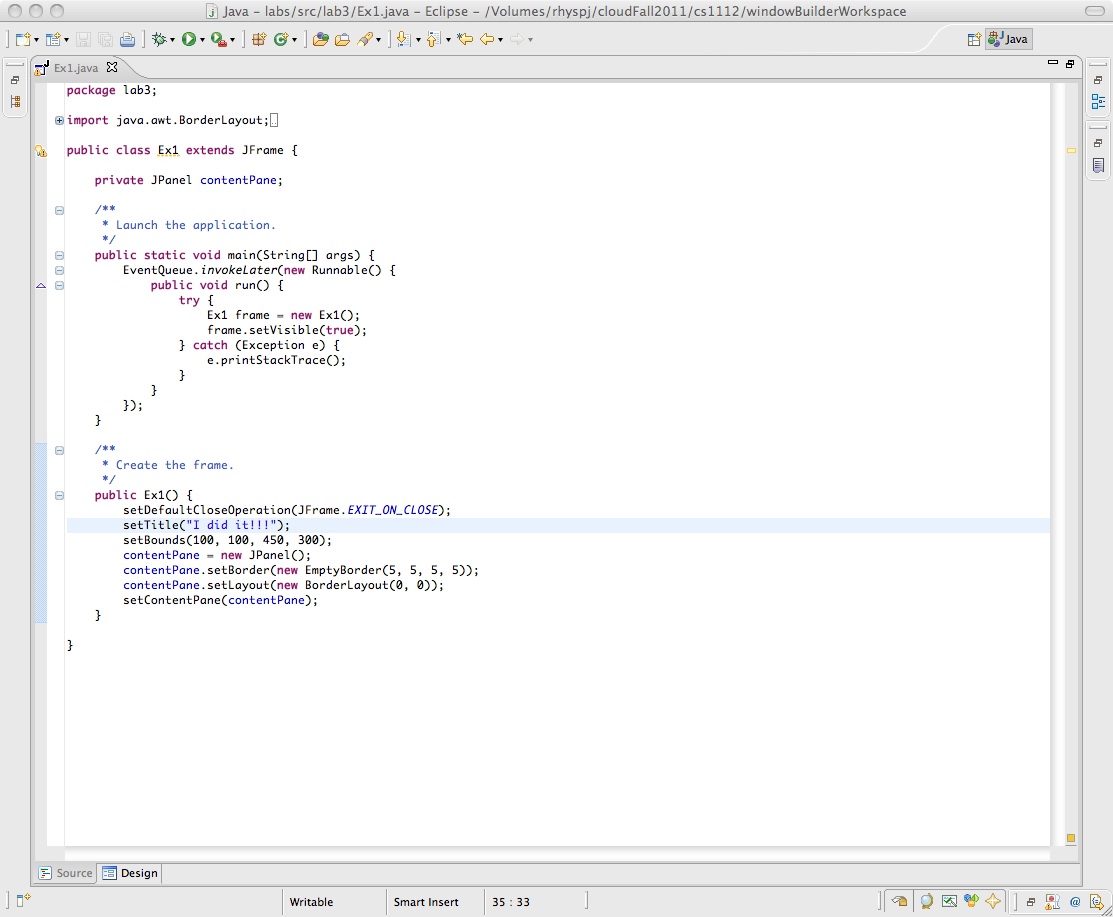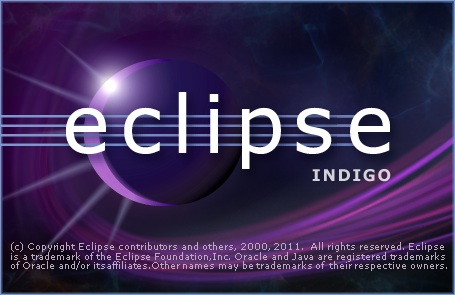
The June 2011 release of Eclipse (Indigo) for Java includes WindowBuilder, a toolbox that lets you build GUI Java programs visually. WindowBuilder is also available for earlier versions of Eclipse as a Plug-in. You will know that you have the Indigo version of Eclipse if it starts up and displays this logo:

If your Eclipse starts up with a different logo, I recommend that you reinstall Eclipse for Java (avoid the "EE" Enterprise Edition).
You will be asked to specify a workspace. Choose a reasonable name for a folder in which you are going to keep your Eclipse projects. Perhaps "CSCI1112" would be a good name for your workspace.
Once you have the large Eclipse opening screen, start up the workbench by clicking on its icon:

This will bring up the workbench
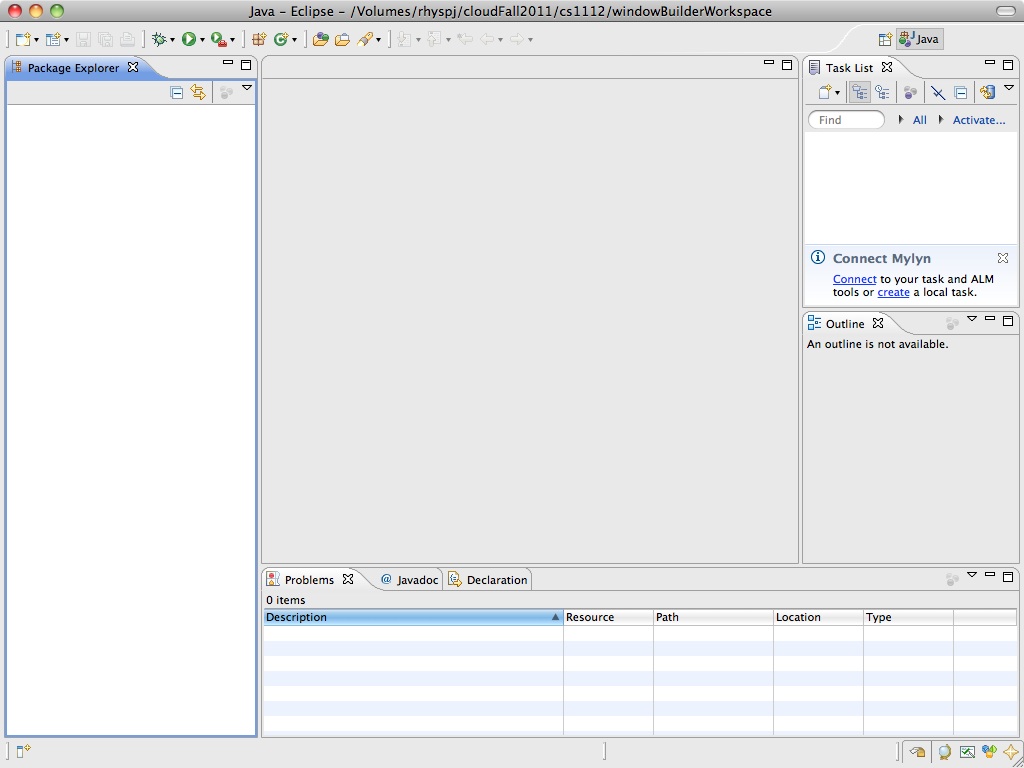
Now we'll create a new project by choosing
File > New > Java Project
Name it something like "labs".
Then make a new package
File > New > Package
and name it something like "lab3".
Now let's use a wizard to get us started building a JFrame. From the menu select
File > New > Other > SwingDesigner > JFrame
You can also access the wizards from the drop down wizard menu in the Eclipse toolbar. Note that we have chosen to use the JFrame wizard. It's a fairly simple one to use. You can read the documentation at Google if you are interested in what the other wizards can do for you.
You'll need a name for the JFrame, something like "Ex1". When you let the wizard do its thing, you will end up with something like
